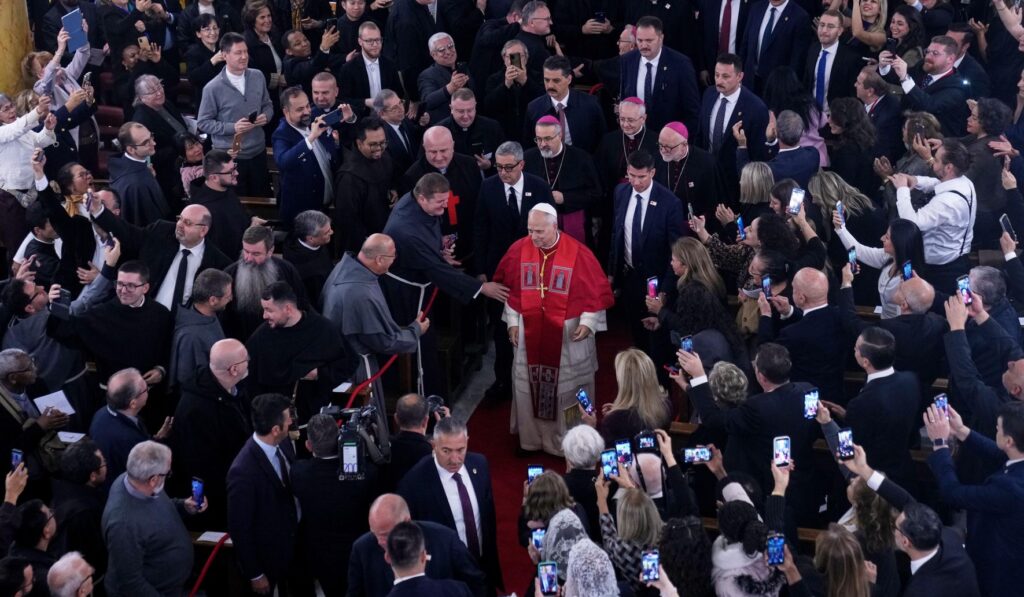Pope Leo XIV traveled to Turkey, opened a pivotal day of his first papal trip, and urged the country’s small Catholic community to take pride and find strength in its size as the visit aims to bolster Christians.
Pope Leo XIV addressed Turkey’s tiny Catholic community on Friday, urging members to see their small numbers as a source of resilience rather than a weakness. The remarks came as he opened a key day of his first papal trip, which officials framed as an effort to bolster Christians. The tone was pastoral, steady, and focused on solidarity.
The pope’s message landed against a backdrop of a compact Catholic presence in a predominantly non-Catholic country. Leaders in Rome and local clergy have long treated such visits as moments to lift spirits and reinforce communal ties. For many believers who attend modest congregations, the visit was a rare public sign of attention from the global church.
Beyond the immediate congregation, the trip carried symbolic weight for Christians across the region who watch for signs of international support. Papal visits often serve as what diplomats call soft power, a chance to signal concern and offer moral backing without heavy-handed policy moves. In contexts where communities are small and visibility is limited, a pope’s presence can amplify concerns that otherwise go unheard.
Local reactions varied from quiet gratitude to cautious optimism, depending on each group’s experience and history. Some community members described the visit as a morale boost, filling pews and sparking conversations about identity and hope. Others viewed it as a reminder that long-term support must extend beyond a single event and be matched by concrete steps from institutions and leaders.
Clergy and lay leaders who met with the pope framed their priorities in practical terms: sustain ministries, protect religious freedom, and nurture the next generation of leaders. Those aims are familiar to faith communities everywhere, yet they take on extra urgency where numbers are small and resources are limited. Building resilient institutions often means focusing on training, youth engagement, and networks that connect scattered congregations.
The visit also drew attention to how religious minorities navigate public life in countries with complex social and political landscapes. Being visible can offer protection and recognition but also invites scrutiny and debate. For the pope, balancing pastoral encouragement with diplomatic sensitivity was part of the task, keeping the spotlight on people rather than politics.
Observers noted that such papal trips are designed to do more than lift spirits for a day; they aim to catalyze conversations among leaders at home and abroad. Whether those conversations translate into sustained action depends on many factors, including local will, international partnerships, and the capacity of institutions on the ground. For small communities, even modest improvements in legal protections or public awareness can have outsized effects.
For the faithful who gathered, the encounter offered an emotional reset and a chance to be seen on a global stage, if only briefly. The pope’s words encouraged them to lean into their identity and to shepherd one another through daily challenges. That personal, pastoral touch is often what congregations remember long after formal statements fade from the headlines.
As the trip continued, attention shifted to how dioceses and organizations would follow up on the momentum created by the pope’s presence. Maintaining that energy requires coordination, clear priorities, and realistic expectations about what external visits can achieve. Still, for communities that rarely find themselves at the center of international attention, the visit marked a meaningful moment of recognition and encouragement.



